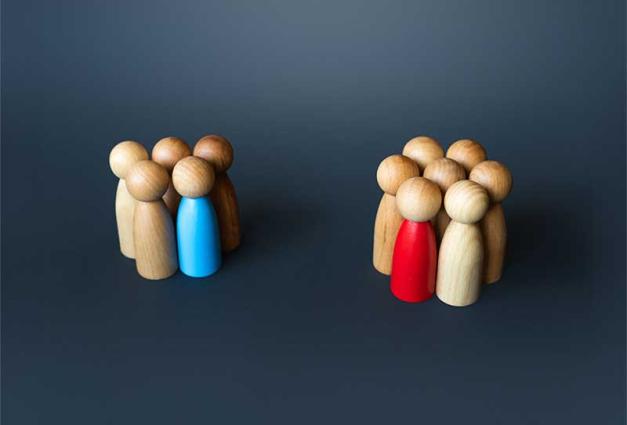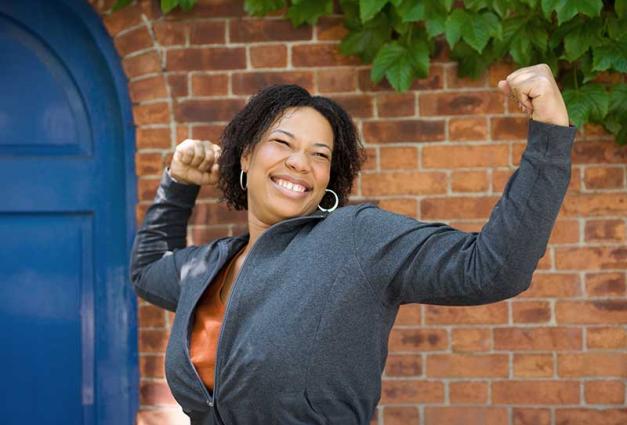Take a minute to imagine what a dictator looks like. Who comes to mind and what qualities do they have? Aside from the images of popular well-known dictators that popped into your mind, you probably imagined a cold, dominant, masculine-looking person. Now, imagine a leader of free and democratic society. What does this person look like? Perhaps you imagined someone who is attractive, warm, and less masculine.
Each of us has an idea in our mind about what certain types of people look like (that is, schemas or stereotypes). These ideas guide people when making inferences about others. People frequently use their idea about what a leader should look like when selecting and following leaders.
There may be actual differences between democratically elected leaders and authoritarian leaders. Democratic leaders are freely elected by their constituents (regardless of their political values) whereas leaders from authoritarian regimes do not typically extend voting rights to the general population. In order to maintain power, dictators often exert power and oppressive practices, and may actually be, or present themselves as, much more dominant and aggressive compared to their freely elected counterparts.
Our question was, can people distinguish dictators from freely-elected democratic leaders based on their facial appearance alone?
We started by showing participants facial photographs of democratic leaders (for example, Bill English of New Zealand, David Cameron from the UK) and dictators (such as Hun Sen of Cambodia, Bashir al Assad of Syria). We then asked them to indicate whether the person in the photo was a democrat or a dictator. After excluding responses when people were familiar with the world leader, people made accurate choices around 69% of the time, which is above the 50% guessing level. So, from a single facial photo, people were able to indicate who was a dictator and who was a democratically elected leader.
Why Were People Accurate?
To figure out how people could accurately identify these types of leaders, we had a new set of viewers rate each leader’s facial photograph on a host of traits including attractiveness, dominance, competence, likeability, trustworthiness, and positive expression. We then used these ratings to find out which of these were used by people in guessing who was a dictator or democrat.
The crucial cues used by the viewers were attractiveness and warmth (an average of likeability and trustworthiness ratings) to distinguish dictators from democrats. Moreover, democratic leaders actually appear more attractive and warmer than dictators.
This means that those mental images in your mind’s eye about what a democratically elected or dictatorial leader looks like might lead you to accurately differentiate the two based on their facial appearance alone.
The face seems to fit the context in which a leader reigns. Democratic leaders who look attractive and warm might have a potential edge in popular elections. Dictators who look unattractive and cold might hold advantages that allow them to maintain power in the face of threats. Appearing intimidating might help dictators create the fear needed to dominate a population.
It is important to consider some limitations and alternative explanations. Nations often range on a continuum from not free to free, which makes it difficult to classify leaders as dictators or democrats. Dictators also tend to have a strong military background, which likely facilitates their rise to power. Leaders’ facial photographs were popular headshots found on the Internet. It is possible that leaders portray themselves in a particular way in photographs. Thus, the results may be something about the selection of the photos rather than the actual facial features of the leaders.
Despite these limitations, context might account for other associations that have been found in research. For example, people prefer dominant-looking leaders during war but trustworthy-looking faces when at peace, and prefer dominant-looking individuals when selecting team members for intergroup competitions but warm-looking individuals in cooperative settings.
People’s ideas about who would make a good leader is context-dependent. Certain leader traits are preferred in different situations, just like the trait differences across leaders from democratic and authoritarian regimes.
For Further Reading
Giacomin, M., Mulligan, A., & Rule, N. O. (2021). Dictators differ from democratically elected leaders in facial warmth. Social Psychological and Personality Science. https://doi.org/10.1177/1948550621991368
Little, A. C. (2014). Facial appearance and leader choice in different contexts: Evidence for task contingent selection based on implicit and learned face-behaviour/face-ability associations. The Leadership Quarterly, 25, 865-874. https://doi.org/10.1016/j.leaqua.2014.04.002
Re, D. E., & Rule, N. O. (2017). Distinctive facial cues predict leadership rank and selection. Personality and Social Psychology Bulletin, 43, 1311-1322. doi:10.1177/0146167217712989
Miranda Giacomin is an Assistant Professor at MacEwan University in Edmonton, Alberta, Canada. She is a personality psychologist whose research focuses on “dark” personality traits and social perception.




